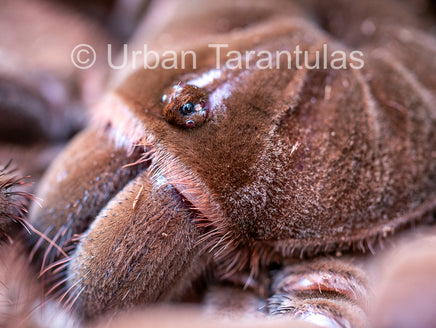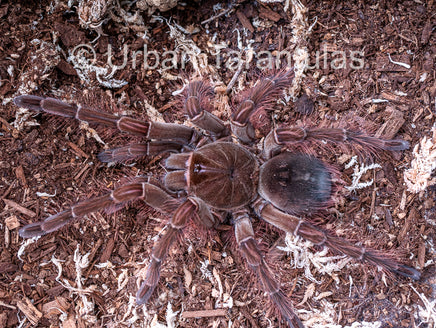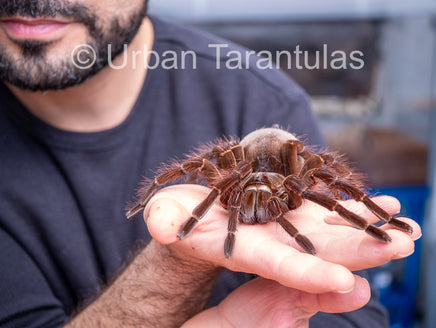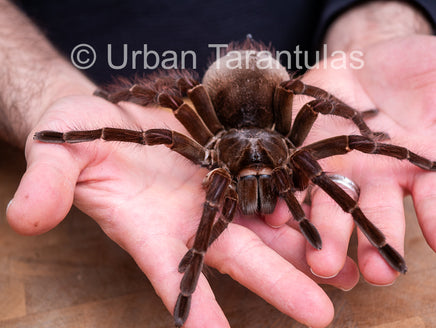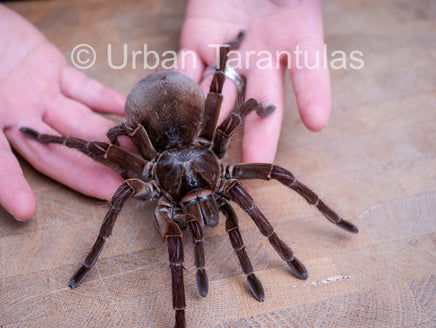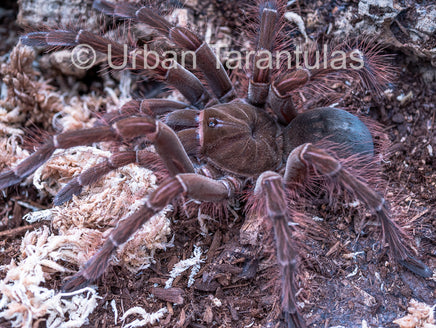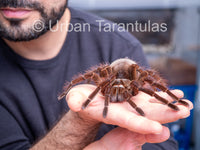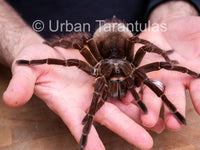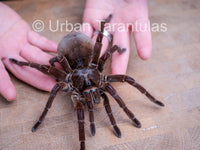Largest Tarantula In The World
Goliath Birdeating Tarantula
Welcome to the world of the Theraphosa blondi, commonly known as the Goliath Birdeater. As one of the largest tarantulas on the planet, this South American native is a marvel in the world of arachnids. With a leg span reaching up to an impressive 11 inches and a body over 4 inches, it's a centerpiece of any collection. Contrary to its name, the Goliath Birdeater doesn't actually hunt birds; instead, it's an opportunistic predator feasting on insects, small mammals, and reptiles. Despite its daunting size and powerful bite, this species is generally docile, making it a popular choice among tarantula enthusiasts. Its sheer size alone brings the "WOW" factor to any setting.
Care Details:
- Temperature: The Goliath Birdeater thrives in a cooler climate than most tarantulas, with ideal temperatures ranging from 68°F to 75°F. This range promotes healthy growth and activity.
- Humidity: For this species, maintain humidity around 70-80%. While water dishes are optional and I personally don’t use them, they can be added without harm.
- Housing: This is one species that you can get a large enclosure for... but for a juvenile or a young adult, a 5 or a 10 gallon is plenty large!
Diet:
My Goliath Birdeaters enjoy a varied diet of crickets, Dubia roaches, and other cockroaches. Given their size, they can also handle larger prey. Always remove uneaten food to prevent mold. Occasionally, a pinky mouse can be offered as a treat, but moderation is key to avoid health issues from too much calcium.
In-depth Facts:
- Latin Name: Theraphosa blondi
- Common Name: Goliath Birdeater / Goliath Birdeating Tarantula
- Locale: Rainforests of South America
- Category: Terrestrial, not a heavy webber.
- Size: Can reach up to 11 inches in leg span, body length over 4 inches.
- Urticating Hairs: Yes, these are present.
- Growth Rate: Moderate; impressive size at maturity.
- Life Span: Females live significantly longer than males, often exceeding a decade or much more.
- Recommended Levels: Best for those with some experience in tarantula care due to its size and care requirements.
Stay Connected:
- Instagram: Follow my Instagram, I'm most active here.
- YouTube: For care and education videos, check out my YouTube channel.
- Facebook: Over here I have all my reviews.
- TikTok: Visit my TikTok for additional content.
Safety Disclaimer:
While the Goliath Birdeater's bite is powerful, its venom is not deadly or particularly dangerous to adults. It's important to handle this species, and all tarantulas, with respect and care. In the rare case of a bite, the discomfort is usually mild and temporary. However, due to its size, the Goliath Birdeater can administer more venom than smaller species.
I cannot assume responsibility for bites. Handling of tarantulas should always be approached with caution and understanding. My experience has taught me to respect these magnificent creatures and to promote safe interactions between tarantulas and their keepers.
